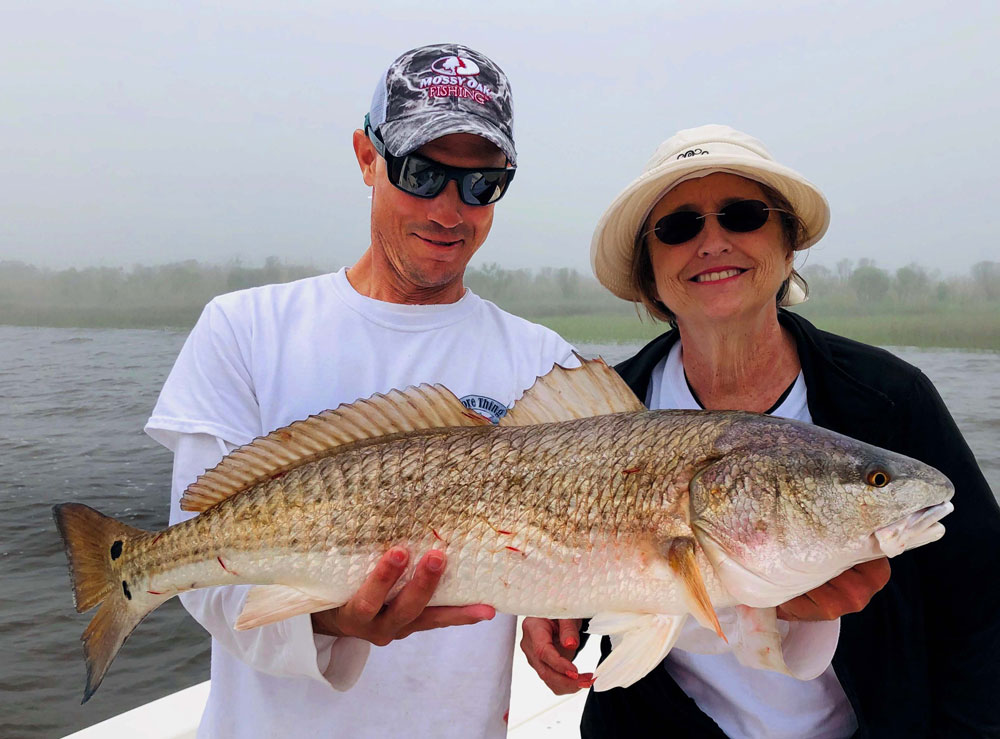Note: At the first of last week, Hurricane Barry dumped a huge amount of rain throughout most of the South, primarily in Louisiana and Mississippi. Since this is still summer vacation time, we wanted to know what effects that rain would have on the Gulf of Mexico’s coastal inshore fishing and interviewed Captain Sonny Schindler of Bayou Caddy, a few miles from Biloxi, Mississippi.

Well, there’s good news and bad news about fishing the Upper Gulf Coast after a storm like Hurricane Barry. The bad news is the wind and the rain that came with that storm prevented us from fishing last week. The good news is we've had a drought on Mississippi’s Gulf Coast until Barry arrived, which means that region has had an abundance of fresh-water intrusion into the Gulf of Mexico from the rain occurring north of the coast. Our salinity levels (the amount of salt in the Gulf) has been about zero, and saltwater fish won’t stay inshore or near shore when the salinity is that low. This huge blast of southern and southwestern winds from Hurricane Barry has caused the salinity level to rise from a previous one to two parts per million of salt water up to 20 parts per million in the bays, bayous and near-shore waters. So, Mississippi’s Gulf Coast is enjoying a huge influx of speckled trout, redfish and flounder moving into back-bay and near-shore waters due to the high salinity after Barry.
However, the bad news is this storm is bringing in a lot of rain, so at some point in the next week or two, all that rain north of the Gulf Coast will come down the Mississippi River. Then all the coastal rivers will have low salinity again for a while. Anglers will have to run further inshore to find speckled trout, redfish and flounder. But the good thing about having the storm is that all the fresh water that has come in with the storm should help our oyster reefs and shrimp production.
When a storm like this hits, all the places we've been fishing will change possibly on a daily basis. Once the fresh water comes down the river, the inshore fish will scatter more. We’ll catch them in places where we don’t normally catch them. My experience has been that often when a hurricane hits like Barry, the specks and reds may be where they’ve been concentrating before the storm, or they may be 15 miles away. We normally fish the inshore reefs in Hancock County and the barrier outlets like Cat Island and concentrate too on the Biloxi Marsh. So, before the storm, all that fresh water has limited where we can fish the Biloxi Marsh successfully because of all the fresh water coming into the marsh.
To locate fish now, we must move often. We will go to the spot where we’ve seen baitfish schooling up and look there for about 5 minutes. Then, we’ll go check another spot. We may move as much as 10 miles or 100 yards, trying to locate the fish in an area. Once we find the fish, we next have to try and figure out whether the fish are holding on oyster reefs, grass troughs (ditches or cuts in the bottom) or sandbars. When we’ve determined the water depth where the fish are concentrating and the structure they’re relating to, then we've got a pattern on where to look for that same depth of water and that same type of structure. For instance, if we find specks and reds on an oyster reef in 3 feet of water, we’ll return to our memory banks or look at our GPS maps and search for 3 feet of water on a nearby oyster reef.
Our experience has been that after a major storm hits, the very next day, the specks and the reds will move inshore and be plentiful. As soon as the wind and the water lay down, so that we can get out without facing inclement weather, we’ll go right back to fishing. The redfish, after the storm, are usually easier to find than the trout. Generally, the slot reds will be holding close to the shoreline, but the trout are more of an open-water fish and somewhat harder to find.






























